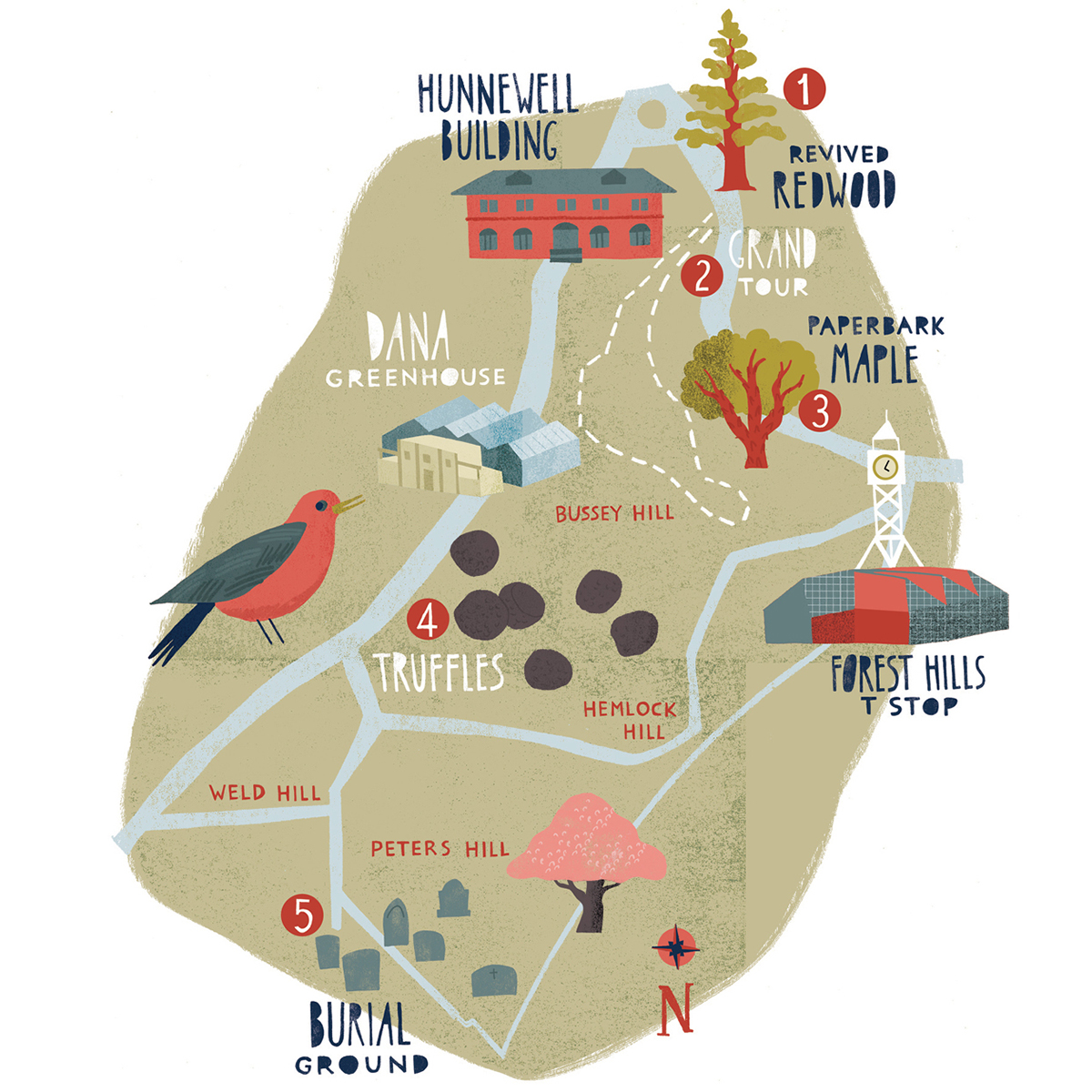The Guide: Urban Leaf Peeping in Boston

Illustration by Gary Venn; Photographs by Michael Dosmann/Arnold Arboretum of Harvard University (Blanche Ames, Donald Wyman); Kyle Port/Arnold Arboretum of Harvard University (Sargent); Jon Hetman (Headshot)
1. Admire a Revived Redwood
Called a metasequoia, the tree featured in the Arboretum’s logo was once thought to be extinct. During an expedition to China in the 1940s, however, researchers confirmed its existence and gathered seeds. Now several grow in the Arboretum—including a beautiful specimen at the entrance.
2. Take the Grand Tour
Volunteer docents lead free tours twice a week throughout much of the year (go to arboretum.harvard.edu for updated schedules and tour times). Prefer to wander solo? The mobile-friendly Arboretum Explorer Web app delivers interactive maps that help identify plants and trees.
3. Find an Endangered Tree
In its native habitat of central China, the paperbark maple is now critically endangered. “It’s the poster child of rare maples,” says Michael Dosmann, the Arboretum’s curator of living collections. Fortunately, you can see one right here in Boston.
4. Tramp Over Some Truffles
The prized fungus grows naturally throughout the grounds. Earlier this year researchers revealed the discovery of a new truffle species growing in the Arboretum. The name: Tuber arnoldianum. Just don’t dig them up!
5. Visit the Dead
Near the base of Peters Hill, on the far south end of the Arboretum, is a small, ancient burial ground. The remains of 28 bodies, suspected to be Revolutionary soldiers, were discovered in this area, and headstones still mark the final resting place for a number of early settlers.
Apples of Your Eye
In the spring they flower; in the fall they bear fruit. Make your way toward Peters Hill to spot these notable crabapple varieties.

Blanche Ames
Named after a prolific botanical artist who was born in Lowell and later married Harvard botanist Oakes Ames, this eponymous crabapple tree, Dosmann says, flowers pink and appears to spiral as it grows.

Sargent
Topping out at about 8 feet tall, the Sargent crapapple tree isn’t the biggest of the bunch, but its legacy is huge: It was named after the Arboretum’s founding director, Charles Sargent, who was the first to bring the seeds for this species over from Hokkaido, Japan.

Donald Wyman
This cultivated variety was introduced to the world in the 1970s thanks to the work of Harvard horticulturalist Donald Wyman. Today it’s among the most popular crabapple trees in the nursery market.

Ask A Pro
Michael Dosmann
The Arboretum’s curator of living collections on all things leafy and green.
What does “living collections” actually encompass?
About 15,000 trees, shrubs, vines, and a few other plants that are alive and part of our museum. We have some dead collections, too, but that’s not as sexy on a business card.
There’s one minute left before the world ends. What tree at the Arboretum would you sit under to watch it all unfold?
I’m very fond of a certain Asian tree called the katsura. I’d probably sit under a katsura while Armageddon occurred.
How many types of crabapple trees does the Arboretum have?
As of this moment, we have 423 different apples and crabapples.
What’s the difference?
It’s the size. If the fruit is an inch or bigger, it’s a regular apple.


